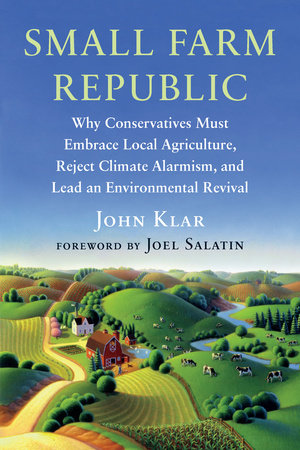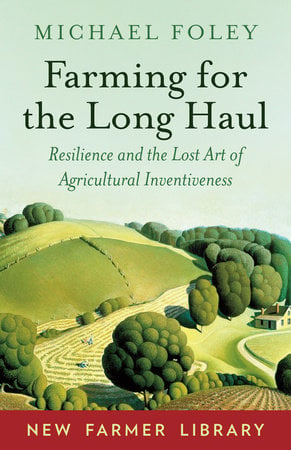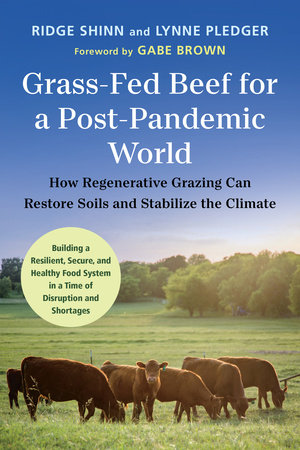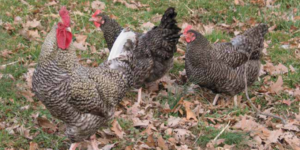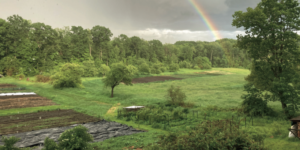A Long-Term Plan: Regenerative Farming
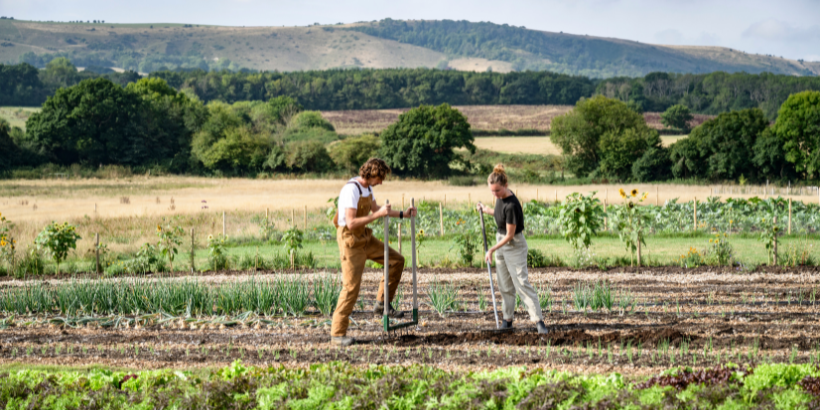
Small farms are being held back. It’s time for a new vision. It’s time for bold new regenerative farming policies that restore both ecosystems and rural communities. We must avoid or eliminate policies that can be exploited by industrial producers at the expense of small or midsize farmers.
“As it stands now, it is not the farmer who is being subsidized so much as the lords of corporate agribusiness. Why shouldn’t the profits be plowed back into the rural community instead?” —Wes Jackson, Nature as Measure
The following is an excerpt from Small Farm Republic by John Klar. It has been adapted for the web.
The Benefits of A Long-Term Regenerative Farming Plan
 The policies I propose as a regenerative politics will quickly and cost efficiently advance environmental benefits while preserving and nurturing liberties, food security, human health, and rural economies and cultures. These policies are tailored to focus resources on regenerative practices by reversing historic regulatory, tax, and subsidization policies that have favored large agricultural interests. It also seeks to implement flexible supports for local food production, processing, and distribution that are market-based and economically beneficial.
The policies I propose as a regenerative politics will quickly and cost efficiently advance environmental benefits while preserving and nurturing liberties, food security, human health, and rural economies and cultures. These policies are tailored to focus resources on regenerative practices by reversing historic regulatory, tax, and subsidization policies that have favored large agricultural interests. It also seeks to implement flexible supports for local food production, processing, and distribution that are market-based and economically beneficial.
To improve regulatory policies on small farms, government rules should be eliminated that promote unsustainable or destructive food production or that prevent sustainable or more healthful agricultural or processing practices.32
To effectively implement food production and regenerative agriculture policy, a thoughtful long-term plan would:
- Implement a five-year (or other intermediate period) of tax credits supporting local food production, in concert with the gradual phasing out of current federal subsidies for industrially produced monoculture crops.
- Offer favorable credit terms and/or grants and tax benefits including accelerated depreciation for water and soil preserving technologies and equipment.
- Prohibit zoning regulations that interfere with basic American rights to grow food.
- Enhance public marketing and distribution networks for locally produced food.
- Implement immediate favorable regulatory revisions to protect and encourage investment in small-scale, widely dispersed slaughtering and processing facilities, milk houses, cheese houses, and other value-added food production facilities, including maple syrup.
- Invest in research and development of programs to reduce waste (especially food waste) and to compost more biomass (especially food waste).
- Inform the citizenry about the benefits of regenerative agriculture and local farming. Public relations is pivotal to reversing misinformation about food and correcting disastrous stigma against the farmers who are needed now more than ever.
- Dramatically shift university investment away from industry-controlled research that undermines farmers and the environment and saps talent for industrial hegemony and instead fund research into regenerative techniques that reduce fossil fuel and fertilizer dependency, secure nutrients in soils, and protect plants and animals from pests and disease using natural organic (chemical- free) methods.
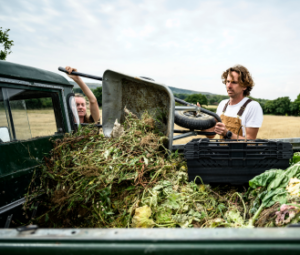 Additional areas for creative policy discussions include:
Additional areas for creative policy discussions include:
- Local real estate tax credits for small- and medium-sized farms, or federal income tax credits designed to offset those property taxes. This would particularly benefit farmers in states (such as Vermont) with exceptionally high property taxes (often attributable to regressive funding of education using real estate).
- Tax credits or grants for additional employment hires at small farms.
- Tax credits or grants linked to diversifying products or expanding processing or value-added products.
- Link tax benefits to increased productivity per acre.
- Tax credits for reduced erosion.
The important factor is to avoid or eliminate policies that can be exploited by large industrial producers at the expense of small or midsize farming operations.
This includes agricultural carbon markets, which suffer from numerous weaknesses including: failure to measure microbial improvements rather than simply carbon; unreliability and inconsistency of carbon measurements; ability of large producers to benefit at the expense of small and family farms; the encouragement of ongoing pollution by credit purchasers (who essentially buy “pollution indulgences”); insecure payment guarantees; rewarding chemical-based operations at the expense of organic. An insightful discussion of the many problems with agricultural carbon markets is “Agricultural Carbon Markets, Payments, and Data: Big Ag’s Latest Power Grab,” a March 2023 policy brief prepared jointly by Open Markets Institute and Friends of the Earth.33
Notes
32. Linnekin, Biting the Hand That Feeds Us, 12.
33. Open Markets Institute and Friends of the Earth, “Agricultural Carbon Markets, Payments, and Data: Big Ag’s Latest Power Grab,” March 2023, https://foe.org/wp-content/uploads/2023/02/Carbon-Markets-Report_ExecutiveSummary_Final.pdf.
Recommended Reads
Recent Articles
With some careful planning, a bit of elbow grease, and some insight from gardening expert Eliot Coleman, you’ll enjoy leeks from your garden all year long.
Read MoreNot convinced that a pasture-based rabbit production could amount to a sustainable business enterprise for the beginner to market-scale farmer?
Read MoreConfused by all the poultry breed options? We’ve got you covered! Discover how to pick the perfect breed for your flock.
Read MorePermaculture vs Natural Farming: What’s the Difference? How are they connected, and where do they diverge in philosophy and principle?
Read MoreCIDER LOVERS ALERT! 🍎 Did you know the type of apple used can make or break the flavor? Which apple variety do you think makes the best cider?
Read More
